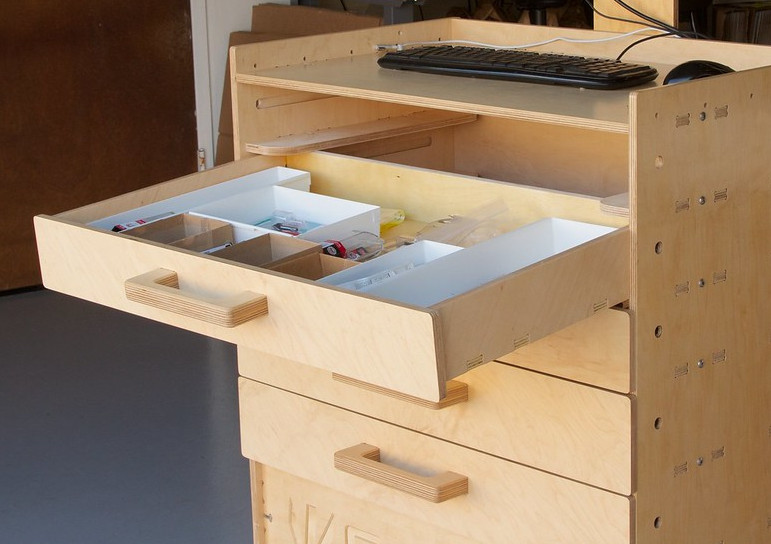If you don’t already know how to organize your desk drawers, then this article is a must-read! The vast majority of people might give some attention to cleaning and organizing their desk, but neglect to pay any attention to their desk drawers.
Often, the reason a desk is so tidy is because everything is tossed into the drawers to keep it out of eye shot.
It’s not cleaning, it’s hiding!
Consequently, the drawers become an unwieldy mess and even result in poor productivity, important items going missing and general dust and dirt accumulating.
Continue reading on to unlock these 12 ingenious steps to keeping your desk drawers tidy. Plus, get the fun tips and hacks as is standards in all my posts!
How to organize your desk drawers
1. Declutter your desk drawer
2. Identify essential items
3. Organize drawers based on items used most to least
4. Place frequently used items in the top drawer
5. Organize drawers based on their category
6. Arrange storage for stationery
7. Invest in desk organizers
8. Store items upright
9. Tidy up loose cables
10. Label everything
11. Reassess storage for effectiveness
12. Repeat every so often
1. Declutter your desk drawer
First things first, empty everything out of your desk drawers (and I mean EVERYTHING – no cheating!). Categorize the items into 3 groups, or the 3 R’s:
1. Rubbish: We’re talking random keys, broken pens and cables, old paperwork and notepads
2. Relocate: Items that you need to keep but don’t belong in your desk drawer, e.g., documents, books.
3. Retain: Items that belong in your desk drawer, e.g., stapler, stationery, notepads
Some questions to help assess what’s a need verse a want include:
1. Did I use it in the last year?
2. Would I buy one if I didn’t own one already?
3. Do I have duplicates of this item?
4. Does it spark joy?

2. Identify essential items
The first time you declutter your desk, it’s usually getting rid of the rubbish and lacks the attention that a second screening would receive. That’s why I recommend sifting through the items that you intend to keep twice.
You may find on your second screening process that there are more items that could be kept out of the drawer. Perhaps, you’ll even consider more items as junk than previously.
3. Organize drawers based on items used most to least
Now that you have a list of essentials that belong in your desk drawer, it’s time to categorize them based on their frequency of use. Consider your workflow and how likely you are to use these objects on a daily basis.
This may involve auditing yourself throughout the day to determine these items.
4. Place frequently used items in the top drawer
Since the top drawer is the closest one to your reach, it makes sense that the materials you use the most are stationed here. This could include keys, staplers, notepads etc.
Store items that are used on a regular basis towards the front of the top drawer. Items that are less frequently used can be positioned either towards the back of the drawer or in the middle or lower drawer.

5. Organize drawers based on their category
Organizing your storage areas based on the type of items stored in them makes it easier and faster to navigate your way through drawers when you’re looking for something.
Categories could include:
- stationery
- envelopes
- cards
- stamps
- important documents
- cables
Items can also be stored based on association. For instance, if you’re storing one of those Dymo label makers, it might make sense to have the label supplies next to it. The same principle applies to a power bank, charging cables can be stored next to it.
If you want to master the organization of your documents, check out: How to organise paperwork – 9 proven steps
Tip: Items can be arranged based both on frequency of use and then category or simply one or the other.

6. Arrange storage for stationery
Small stationery items are notorious for creating a mess and getting scattered everywhere. Sort your stationery into compartments or containers to minimize the mess and to ensure everything stays in its place. Stationery holders are a neat way of enforcing law and order on these supplies as they have multiple separated slots for segregating all the random items you have.
Ideally, you’ll segregate each type of stationery into a different compartment, e.g., all paper clips go together, and all rubber bands have a separate compartment.
Pens or markers could be bundled together using an elastic band or popping them into the tall tube section on the stationery holder.
Tip: Using clear containers or labeling the storage containers make it easier to identify what is in each one.
7. Invest in desk organizers
The motion of pulling and pushing drawers in and out inevitably causes objects to shuffle around and that can become messy, especially if small or lightweight objects are involved.
Desk drawer organizers are an ingenious but smart and cost-effective method of keeping items in their designated place. They also make the process of segregating items based on their category or frequency of use easier to achieve and maintain.
Additionally, they can increase the amount of items that you can store in your drawers.

8. Store items upright
When objects are stockpiled in a horizontal position, it makes it more difficult to access them. Take a stack of books or files for example. If these are stored horizontally in a drawer, identifying what’s in the drawer is rather awkward and will often involve removing everything till you find what you’re looking for.
On another note, it’s nearly impossibly to remove the bottom item without messing up all the files above it.
Instead, storing items vertically allows you to easily identify what is stored where and easily remove it without disrupting the neat arrangement of the other objects. This also applies to stationery.
Furthermore, by storing objects upright, it can utilize otherwise redundant upper space and optimize valuable surface space in the desk drawer. This is particularly true in deep drawers where tall or large documents or objects are involved.

9. Tidy up loose cables
Cable chaos is a common theme on a desk or in the drawers. They also consume an unnecessary amount of space if they are not neatly tidied away. Wrap cables up and tie them in place with cable ties, Velcro straps or even a hair bobbin. Just make sure you don’t wrap them too tightly.
Many electronic gadgets can be charged or operated by the same type of cable, e.g., tablets, phones, power banks. Avoid keeping duplicate cables by identifying these items and removing unnecessary cables.
Tip: Discard of wires if you no longer know their use.
10. Label everything
If it’s not blatantly obvious what it is by looking at it, it needs a label. How seriously you take the labeling is up to you. I’ve even seen people go so far as to label the label maker! I personally think that this is one of the most fun parts of arranging an office drawer (slightly sad, I know!).
But remember, if you don’t own a label maker, labels or even a piece of paper taped to the object will suffice. Many objects can be identified by simply writing what it is on the item.
Labels come in particularly valuable for files. Many file dividers have a slot at the top where a description of the document can be written in for easy identification with a glance.
Other examples of items that can be labeled include cables, storage trays, folders (label the side that you can see when looking into your drawer) and even the drawers themselves.
11. Reassess storage for effectiveness
The immediate time after completing this reorganization could be a bit difficult to navigate as you try to configure your brain to the new setup. However, after a few hours or days, you’ll have a good idea of how well the new system is working for you.
In this time, consider what is working well and what could be improved. Make note of these improvement opportunities so they can be addressed once the review is complete.
For instance, if you find yourself regularly shuffling around and pulling objects out of the far corner of a drawer, then these items probably need to be relocated to a more convenient location.
After a few days, review the list of improvement opportunities and make the necessary changes.
12. Repeat every so often
Over time, the process of organizing your desk drawers will need to be repeated as items get tossed and paperwork piles up. When you see your desk drawers falling into disarray, it’s time to go through the steps again and put some order to the system. The more frequently that you complete this, the less time that it should take you!
Furthermore, performing regular cleaning of the area will help the desk drawer to stay bang tidy!
Tip: Ensure everything is in its place at the end of the day. This helps to maintain the organized system and sets you up for success the next day you come back to work at your desk.
Conclusion
While it may feel like a chore, dedicating a short amount of time to arranging your desk drawer and the surrounding area will pay off in the long term.
Plus, if you needed a break from your work, what better way to spend the time than organizing the space to make you a more efficient operator! It can even reduce your stress levels since it’s more organized and cleaner. How often do you clean your desk or desk drawer?

Now that you have organized your desk drawers, why not put some manners on your office desk too? I shared the proven technique that I followed, and it had the added benefit of reducing my anxiety levels and increasing my efficiency too! If you’re hungry for more hacks and tips, or you want to catapult your productivity to new heights, then go check out How to organize my office desk – 10 easy steps
My goal with this website is to help you on all matters related your home office and your work area. With that in mind, if you have any queries or comments on the above, please drop them in the box below. I’d love to hear them.
Sources
https://www.oxo.com/blog/cleaning-and-organizing/desk-drawer-organization/
https://www.fastcompany.com/40458598/this-is-how-to-organize-your-messy-desk-drawers-at-work
https://www.velcro.com/blog/2020/02/how-to-organize-desk-drawers-easily-efficiently/
